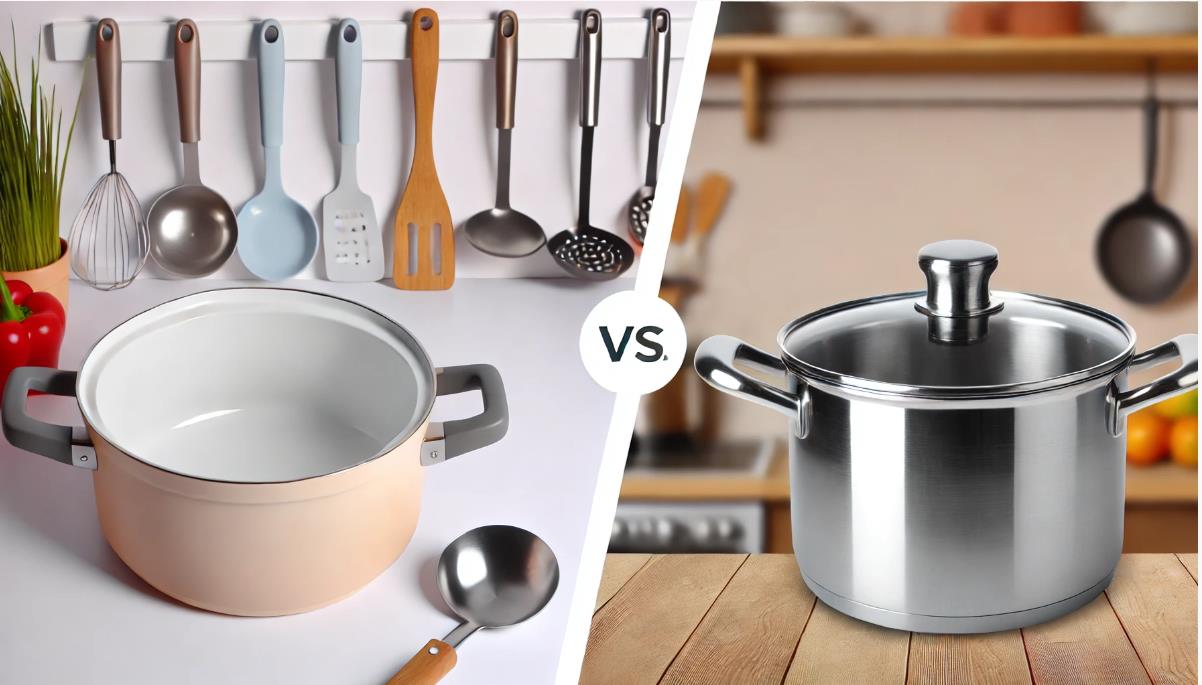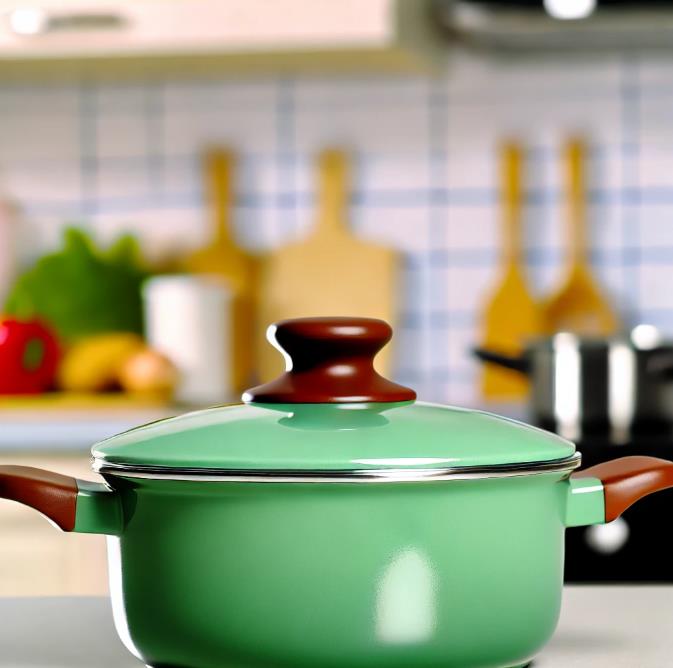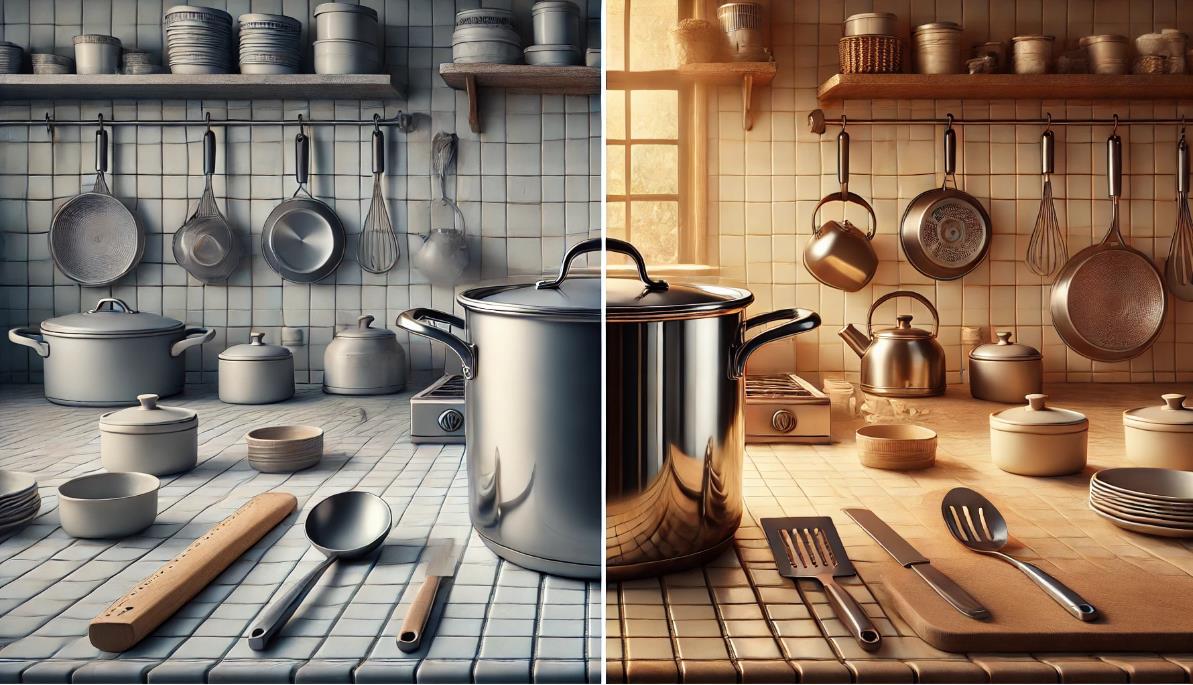Is Ceramic Or Stainless Steel Better For Cooking
Time of issue: 2024-11-05 10:39:28- What is Ceramic?
- What is Stainless Steel?
- Detailed Comparison: Ceramic vs. Stainless Steel
- Now, Which Is Better for Me?
- EndNote
- FAQ Section
- Question: Is Ceramic or Stainless Steel Better for Cooking at High Heat?
- Question: Which is Healthier: Ceramic or Stainless Steel for Cooking?
- Question: Can You Use Stainless Steel and Ceramic on Induction Cooktops?
- Question: Which is Easier to Clean: Ceramic or Stainless Steel?
- Question: How Long Does Ceramic vs. Stainless Steel Last?

When deciding between ceramic and stainless steel for cooking, the choice depends on your specific cooking needs. Ceramic is better for those who prioritize non-toxic, easy-to-clean, and non-stick properties, especially when cooking at low to medium heat. On the other hand, stainless steel is better for high-heat cooking, searing, and versatile techniques.
For those looking to equip their kitchen with high-quality ceramic or stainless steel products, Global Reach Ceramic offers a range of premium options designed to meet every cooking style.
Below, we explore which option might be better based on key factors and address common questions to help you make an informed decision.
What is Ceramic?

Ceramic typically has an aluminum core with a ceramic coating. This non-stick coating is derived from natural materials, providing a smooth surface that needs minimal oil. Unlike traditional non-stick surfaces, ceramic doesn’t contain harmful chemicals like PFOA and PFAS, making it a healthier option for many.
Benefits of Ceramic for Cooking
- Non-Toxic and Health-Conscious: Ceramic is often praised for being free from harmful chemicals like PFOA, PFAS, and other toxins found in traditional non-stick coatings. This makes it a great option for those looking for safe, non-toxic cooking surfaces.
- Easy to Clean: Its natural non-stick properties allow for effortless cooking and cleaning with minimal oil, making it suitable for low-fat cooking.
- Even Heat Distribution: Ceramic heats evenly, which is great for cooking delicate foods like eggs and fish at low to medium temperatures.
Limitations of Ceramic
- Durability Issues: Ceramic is prone to chipping and losing its non-stick qualities over time, especially if not handled carefully.
- Temperature Sensitivity: Designed for low to medium heat; high temperatures can damage the coating and reduce lifespan.
What is Stainless Steel?

Stainless steel products are often multi-layered, combining metals like iron, chromium, and nickel. This construction ensures durability, even heat distribution, and the ability to handle high temperatures without reacting with food, preserving the dish’s natural flavors.
Benefits of Stainless Steel for Cooking
- Durability and Longevity: Stainless steel is robust and can last for decades, making it a long-term investment. It resists scratches, warping, and can withstand high temperatures.
Versatility: Stainless steel is excellent for various cooking techniques, from stovetop searing to oven roasting. It handles high-heat cooking exceptionally well, which is ideal for browning and searing.
Non-Reactive and Safe: It doesn’t react with acidic or alkaline foods, preserving the natural flavors of dishes, making it safe for cooking all types of food.
Limitations of Stainless Steel
- Sticking Issues: Unlike ceramic, stainless steel does not have a natural non-stick surface. Cooking without sticking requires some skill, like properly heating the pan and using oil.
- Higher Cost: While often more expensive upfront, its durability can justify the investment over time.
Detailed Comparison: Ceramic vs. Stainless Steel

Durability
- Ceramic: Lightweight and easy to handle but susceptible to chipping and losing non-stick properties. Most ceramic products last around 2-3 years with proper care.
- Stainless Steel: Extremely robust, can last decades. Resistant to high heat, scratches, and can be cleaned with metal scrubbers if needed.
| Material | Average Lifespan |
| Ceramic | 2-3 years |
| Stainless Steel | 10+ years |
Heat Distribution & Cooking Techniques
- Ceramic: Provides even heat but must be used on medium to low settings to preserve its non-stick surface. Ideal for delicate dishes like eggs and fish.
Stainless Steel: Excellent for high temperatures, suitable for searing meats and can go from stovetop to oven, offering versatility for different dishes.
Health & Safety
- Ceramic: Non-toxic and eco-friendly, free from harmful chemicals that are present in some non-stick coatings.
- Stainless Steel: Non-reactive and safe for cooking all types of food. High-quality stainless steel doesn’t leach metals into your food, making it a safe option for most kitchens.
Ease of Cleaning & Maintenance
- Ceramic: Easy to clean initially but can degrade, making it harder over time. Requires gentle cleaning tools.
- Stainless Steel: Can be tough to clean, especially if food sticks, but allows for heavy scrubbing, deglazing, and the use of cleaning agents like baking soda without damage.
Appearance
- Ceramic: It brings a splash of color and variety to your kitchen. These vibrant options allow cooks to express their style, making ceramic cookware not just a tool but a decorative element in the kitchen.
- Stainless steel cookware: Stainless steel cookware offers a sleek, sophisticated look that blends effortlessly with various kitchen styles. Its polished surface maintains its shine even after years of cooking, making it a timeless addition to any kitchen.
Cooking Applications and Experience
- Ceramic: It is known for its easy-to-clean, non-stick surface, which is perfect for cooking delicate foods prone to sticking, such as eggs, fish, and sautéed vegetables.Think of ceramic as the go-to option for simpler dishes that don’t require intense heat, providing a smooth and seamless cooking experience.
- Stainless steel: It offers an incredibly versatile cooking experience, perfect for a wide variety of methods and recipes. Whether you’re sautéing vegetables, or transferring dishes from the stovetop to the oven, and even heat distribution make it a reliable choice for more intense cooking tasks.
Cost & Value for Money
- Ceramic: Generally cheaper but may need replacing every few years, especially if the non-stick surface wears down.
- Stainless Steel: Higher upfront cost but lasts much longer, making it a better long-term investment.
Now, Which Is Better for Me?
Now that we’ve explored the differences between ceramic and stainless steel, it's time to decide which one fits your cooking style better.
If you’re an experienced cook who loves experimenting with different techniques, stainless steel might be your best bet. Its durability and ability to handle high heat mean you can try everything from searing to roasting without worry.
While it may require a bit more budget, the investment pays off with cookware that can last for decades, making it a reliable partner in your culinary adventures.
On the other hand, if you’re new to cooking or prefer quick, simple, and healthy meals, ceramic is a fantastic choice. Its non-stick surface makes cooking and cleaning a breeze, and it requires less oil, promoting healthier dishes.
Plus, if you enjoy matching your kitchen tools with your décor, ceramic’s variety of colors and styles can add a charming touch to your kitchen setup—all without breaking the bank.
Ultimately, both ceramic and stainless steel have their strengths, so choose the one that aligns with your cooking habits, budget, and aesthetic preferences.
EndNote
Ultimately, the decision of whether ceramic or stainless steel is better for cooking comes down to your preferences and cooking style. Ceramic is an excellent choice for those who want a non-stick, easy-to-clean surface that requires minimal oil and is free from harmful chemicals. It’s perfect for low to medium-heat cooking.
On the other hand, stainless steel stands out for its durability, versatility, and ability to handle high-heat cooking, making it ideal for more robust culinary tasks like searing, browning, and oven roasting.
So, which type of cookware do you think suits your kitchen better? Share your thoughts and experiences with us-we’d love to hear your take!
FAQ Section
Question: Is Ceramic or Stainless Steel Better for Cooking at High Heat?
Answer: Stainless steel is better for high-heat cooking. It can handle higher temperatures without damage, making it ideal for searing, browning, and roasting. Ceramic, on the other hand, is best for low to medium heat as high temperatures can damage the non-stick coating.
Question: Which is Healthier: Ceramic or Stainless Steel for Cooking?
Answer: Both ceramic and stainless steel are considered safe, but ceramic is often seen as a healthier option because it is free from harmful chemicals like PFOA and PFAS. Stainless steel is also non-reactive and safe for most types of cooking, especially when buying high-quality, food-grade options.
Question: Can You Use Stainless Steel and Ceramic on Induction Cooktops?
Answer: Stainless steel can be used on induction cooktops if it has a magnetic base. Most ceramic cookware is not compatible with induction cooktops unless it has a special induction-compatible base.
Question: Which is Easier to Clean: Ceramic or Stainless Steel?
Answer: Ceramic cookware is easier to clean because of its non-stick surface, but the coating can degrade over time. Stainless steel requires more effort, especially if food sticks, but it is more durable and can be scrubbed vigorously without damage.
Question: How Long Does Ceramic vs. Stainless Steel Last?
Answer: Stainless steel can last for decades with proper care, making it a long-term investment. Ceramic, while easier to handle and clean, usually lasts around 2-3 years before the coating starts to wear off, depending on use and maintenance.
RECENT POSTS
- The Benefits of Wholesale High-Quality Ceramic Products for Retailers
2025-12-17
- Can You Make an Ashtray with Air Dry Clay? Pros, Cons, and Safer Alternatives
2025-12-17
- The Impact of Ceramic Materials in Energy-Efficient Buildings: Benefits and Applications
2025-12-04
- Top 7 Ceramic Cookware Health Benefits: Why It’s a Safer Choice for Your Kitchen
2025-12-04
- How to Clean Ceramic Planters and Improve Their Lifespan?
2025-11-17
- 15 Best Ceramic Holiday Gift Ideas for 2025: Thoughtful, Elegant & Heartfelt
2025-11-17
- Stoneware vs Porcelain vs Earthenware: Quick Decision Guide
2025-10-09
- Are Ceramic Glazes Food Safe? The Truth Behind the Shine
2025-10-09










